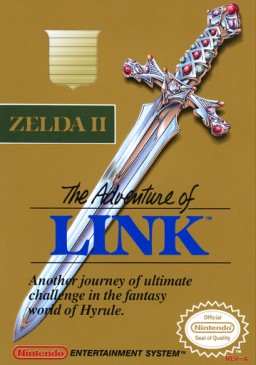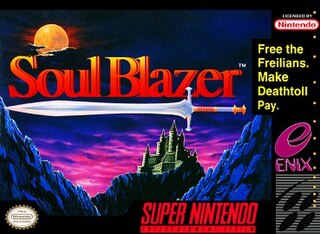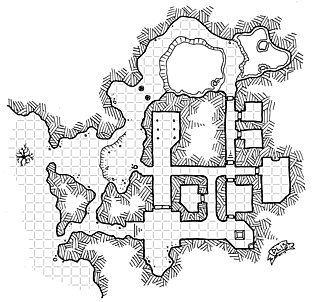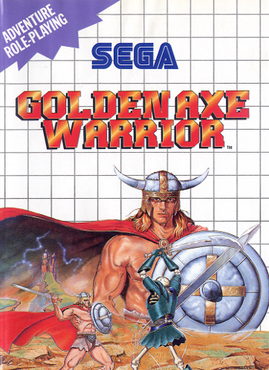
Zelda II: The Adventure of Link is an action role-playing game developed and published by Nintendo. It is the second installment in the Legend of Zelda series and was released in Japan for the Famicom Disk System on January 14, 1987—less than one year after the Japanese release and seven months before the North American release of the original The Legend of Zelda. Zelda II was released in North America and the PAL region for the Nintendo Entertainment System in late 1988, almost two years after its initial release in Japan.

Princess Zelda is a character in Nintendo's The Legend of Zelda video game series. She was created by Shigeru Miyamoto for the original 1986 game The Legend of Zelda. As one of the central characters in the series, she has appeared in the majority of the games in various incarnations. Zelda is the elf-like Hylian princess of the kingdom of Hyrule, an associate of the series protagonist Link, and bearer of the Triforce of Wisdom.

The ClueFinders is an educational software series aimed at children aged 8–12 that features a group of mystery-solving teenagers. The series was created by The Learning Company as a counterpart to their Reader Rabbit series for older, elementary-aged students. The series has received praise for its balance of education and entertainment, resulting in numerous awards.

Soul Blazer, released in Japan as Soul Blader, is an action role-playing video game developed by Quintet and published by Enix for the Super Nintendo Entertainment System. It was released in 1992 in Japan and North America, but not released in Europe until 1994.

Link is a character and the protagonist of Nintendo's video game franchise The Legend of Zelda. He was created by Japanese video game designer Shigeru Miyamoto. Link was introduced as the hero of the original The Legend of Zelda video game in 1986 and has appeared in a total of 21 entries in the series, as well as a number of spin-offs. Common elements in the series include Link travelling through Hyrule whilst exploring dungeons, battling creatures, and solving puzzles until he eventually defeats the series' primary antagonist, Ganon, and saves Princess Zelda.

Ganon is a character and the main antagonist of Nintendo's The Legend of Zelda video game series and franchise, as well as the final boss in many Zelda titles. In his humanoid Gerudo form, he is known as Ganondorf. A massive and malevolent pig-like creature, Ganon first appeared in the original The Legend of Zelda game in 1986, while his alter ego, Ganondorf, was introduced in Ocarina of Time. He has since appeared in the majority of the games in the series in various forms. He is the archenemy of the protagonist Link and Princess Zelda of Hyrule and originally the leader of the Gerudo, a race of humanoid desert nomads before becoming the ruler of his demon army.

Nintendo Selects is a marketing label previously used by Nintendo to promote best-selling video games on Nintendo game consoles. Nintendo Selects titles were sold at a lower price point than new releases. The program paralleled other budget range software by Sega, Sony, and Microsoft to promote best-selling games on their consoles as well. In Japan, the discount label was introduced in 2015 for various Nintendo 3DS titles as the Happy Price Selection, although South Korea adopted the Nintendo Selects name at an earlier period. The most recent Nintendo Selects titles were released for the Wii U and 3DS and, as of January 2024, no Nintendo Switch games have been rebranded as Nintendo Selects.

A dungeon crawl is a type of scenario in fantasy role-playing games (RPGs) in which heroes navigate a labyrinth environment, battling various monsters, avoiding traps, solving puzzles, and looting any treasure they may find. Video games and board games which predominantly feature dungeon crawl elements are considered to be a genre.

Zelda's Adventure is an action-adventure fantasy video game developed by Viridis Corporation and released on the CD-i format, based on The Legend of Zelda franchise. Set in the land of Tolemac, the game follows a non-traditional storyline, in which Link has been captured by the evil lord Ganon, and Zelda must collect the seven celestial signs in order to rescue him.
Several LCD games based on Legend of Zelda game series have been released. The first, Zelda, released in 1989, was developed and manufactured by Nintendo; later LCD games were licensed to other developers. The Legend of Zelda game watch (1989) is a wristwatch game produced by Nelsonic as part of their Nelsonic Game Watch series. Zelda no Densetsu: Kamigami no Triforce is a fighting game produced by Epoch Co. for the Barcode Battler II platform, and was released only in Japan.

Zeliard is a 1987 role playing platform game developed for the NEC PC-8801 and published by Game Arts in 1987 in Japan. Sierra On-Line struck a deal with Game Arts and had the game re-published for Europe and North America for MS-DOS compatible operating systems in 1990. In Zeliard, the player controls the knight Duke Garland, whose task is to save the Kingdom of Zeliard by destroying the evil overlord Jashiin, and recovering the Nine Tears of Esmesanti, magic jewels.

Golden Axe Warrior is an action-adventure role-playing video game, developed and published by Sega. It was released on the Master System in 1991 as a spin-off of the Golden Axe video game series. The game follows a young warrior who tries to avenge the death of his parents by exploring ten labyrinths, collecting nine missing crystals and battling with the evil tyrant Death Adder. Players must cross a large world, fight enemies, seek mysterious labyrinths, fight bosses, and obtain the crystals that are guarded by many monsters. All the playable characters from the original Golden Axe make cameo appearances.
In the 1990s, Philips Interactive Media published three action-adventure games based on Nintendo's Legend of Zelda franchise for its Compact Disc-Interactive (CD-i) players. The first two, Link: The Faces of Evil and Zelda: The Wand of Gamelon, were developed by Animation Magic and released simultaneously on October 10, 1993, and Zelda's Adventure was developed by Viridis and released on May 10, 1996. The two latter entries are the first to feature Princess Zelda as the protagonist instead of Link. Faces of Evil and Wand of Gamelon use the side-scrolling view introduced in Zelda II: The Adventure of Link (1987), while Zelda's Adventure has a top-down view reminiscent of the original 1986 game. All three are non-canon to the Zelda franchise.
Animation Magic was a Russian-American animation studio founded in Gaithersburg, Maryland in 1991, with offices later added in Cambridge, Massachusetts and a 100%-owned subsidiary in Saint Petersburg, Russia. The company developed animations for CD-based software. It was acquired in December 1994 by Capitol Multimedia.
There have been a variety of Sesame Street video games released for video game platforms. Most of the Sesame Street video games were published and developed by NewKidCo.

Chill Manor is an educational first-person shooter for MS-DOS compatible systems. The game is designed to teach history to children. It is the sequel to I.M. Meen and shares similar gameplay. Chloe Leamon provided Ophelia Chill's voice, while Peter Berkrot reprised his role as I.M. Meen.

Link: The Faces of Evil and Zelda: The Wand of Gamelon are action-adventure games developed by Animation Magic and published by Philips Interactive Media for the CD-i on October 10, 1993 in North America and December 25 of the same year in Europe. They were released on the same day, were developed simultaneously, and look and play similarly because they use the same graphic engine. Both games are based on Nintendo's The Legend of Zelda franchise, but are not acknowledged as official, canonical entries and are the first two games of three Zelda games released for the CD-i. The third, Zelda's Adventure, was developed separately and plays differently.
A YouTube poop (YTP) is a type of video mashup or edit created by remixing/editing pre-existing media sources, often carrying subcultural significance into a new video for humorous, vulgar, satirical, obscene, absurd, profane, annoying, confusing, or dramatic purposes. YouTube poops are traditionally uploaded to the video sharing website YouTube, hence the name.
Baldi's Basics in Education and Learning is a 2018 horror game developed and published by Micah McGonigal, known by the pseudonym "mystman12". Set in a schoolhouse, the player must locate seven notebooks which each consists of math problems without being caught by Baldi, his students and other school staff members, while also avoiding various obstacles. The game became popular for its difficulty, nostalgic gameplay and graphics and elements of absurdist humour and simplicity.

Arzette: The Jewel of Faramore is an animated adventure game developed by Seedy Eye Software and published by Limited Run Games. It was released on February 14, 2024, for Nintendo Switch, PlayStation 4, PlayStation 5, Xbox Series X/S, and Windows. Arzette is a spiritual successor to the CD-i games Link: The Faces of Evil and Zelda: The Wand of Gamelon.













